In 2018, Greece suffered one of the most devastating events in the Attica Peninsula, leaving at least 100 deaths on that fateful July 23rd. The wildfire complex was exacerbated by hurricane-force winds in the area, producing gusts of up to 127 km/h, surpassing the expected weather conditions for that time of the year.
Greece was followed by Bolivia, California, Australia, and more recently, Chile and Canada. They all share the fact that, when conditions allow it, they transition from predictable behavior to extreme behavior. This is due to the frequent occurrence of heatwaves, new record-high temperatures, rising sea and atmospheric temperatures, ultimately creating an environment with more energy that facilitates pyroconvection.
The 2023 Wildfire: The Largest in Europe This Century
The wildfire that occurred in August 2023 has become the largest recorded in Europe this century, covering an area of over 90,000 hectares. This magnitude results from the merger of two fires, separated by approximately 20 kilometers. What is remarkable is that, under normal circumstances, fires of this magnitude could take weeks to consume such vast expanses, but this one did it in just a few days. Its main advance was estimated at 45 kilometers in half a day, and the only thing that seemed capable of stopping it was the Mediterranean Sea, as indeed happened.

Description: View from the hotel where Jan was staying in the village of Anixi. The fire can be seen in the Parnitha nature reserve. About 10 kilometers from the fire. August 23, 2023.
Source: Jan Ohmen
Flames, Camera, ACTION
Jan Ohmen, a journalist specializing in emergencies, traveled to Greece from Germany to experience firsthand the wildfires affecting the population. According to Jan, "The experience from the very beginning was overwhelming. What I experienced there I could not foresee or prepare adequately for in advance; this kind of forest fire had not been seen in Europe, let alone in Germany."
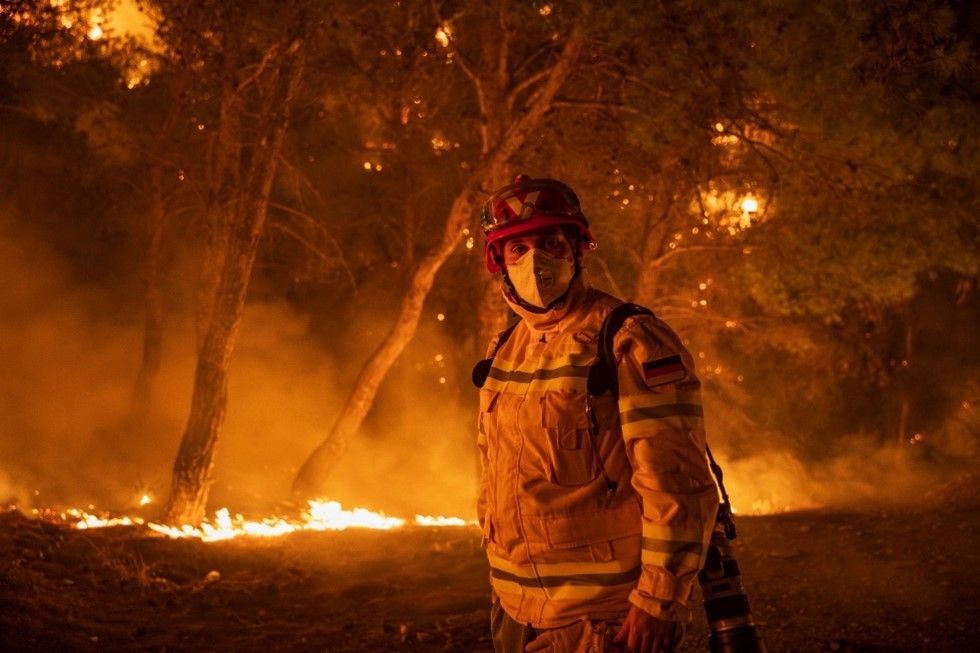
Description: In the image, we see Jan, also known as @feuerreport. The photo was taken in the village of Kropia-Acharnes. It is on the fire line from the previous image. It was during the night of August 22, 2023, to August 23, 2023.
Source: Jan Ohmen
Likewise, Tuesday, August 22nd, was the most critical day, with constant changes in wind and a significant worsening of fire behavior, with flames reaching lengths of 20 meters near populated areas, as stated by the journalist and as can be seen in the following images.

Description: Hotspots captured by the Terra satellite on August 21, 22, and 23.
Source: worldview.earthdata.nasa.gov
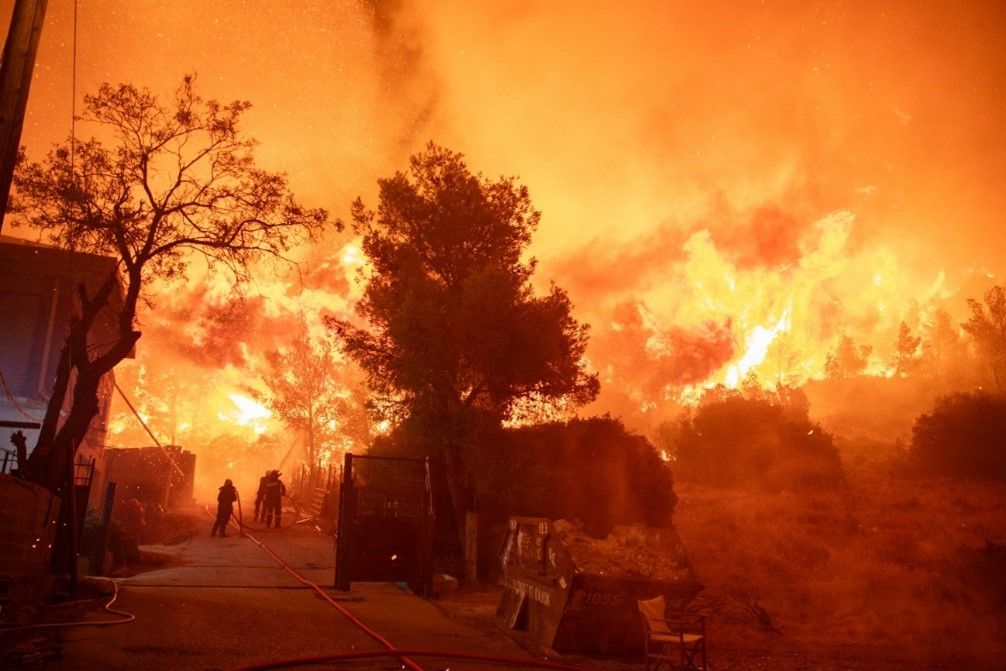
Description: Impact of the fire on the locality of Kropia-Acharnes. The house on the left was able to be protected by local firefighters. Fortunately, there were hardly any houses destroyed. It was during the night of August 22 to August 23, the most critical period.
Source: Jan Ohmen
People's Commitment and International Cooperation
One notable aspect of such events is the special assistance provided by citizens to all professionals involved, in this case, the Greeks. Firefighters from their own country or those coming from external aid, journalists, healthcare personnel, all are well-received. In Jan's specific case, he even mentions the car owner they rented from, who, upon returning the vehicle, embraced them with tears in his eyes and thanked them for their work.
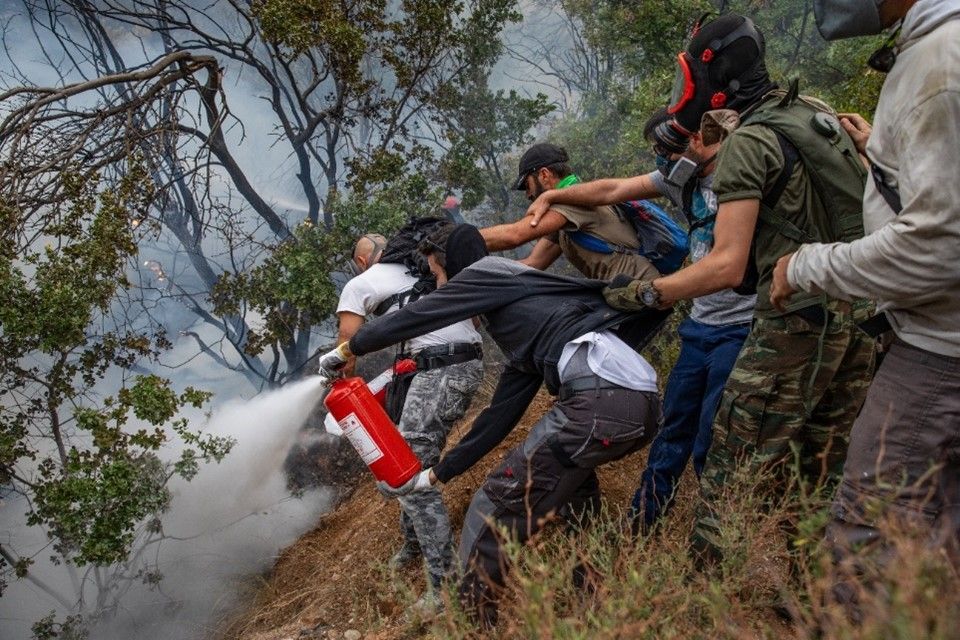
Description: One of the most striking moments seen by the photojournalist. Many civilians helped in extinguishing a fire in Fyli that threatened a monastery. In this case, the fire crossed the Thrasyllou road and the citizens, with the equipment they had and despite the terrain's incline, tried to put it out without much success. The image was taken on August 23.
Source: Jan Ohmen
The situation of the wildfires in Greece received a solidarity response at the international level. The European Union announced a significant deployment, with over 450 firefighters and seven aircraft. Specifically, 81 firefighters, 26 vehicles, and three aircraft were sent to the island of Rhodes, one of the hardest-hit areas. European countries like Bulgaria, Croatia, Italy, Poland, Romania, and Slovakia sent firefighters and firefighting equipment, while Egypt, France, Israel, Jordan, Malta, and Turkey contributed helicopters and firefighting aircraft. Even Spain joined the effort, sending two amphibious Canadair aircraft from the 43rd Air and Space Army Group. International cooperation is presented as one of the possible solutions to this new generation of wildfires, where combining efforts is the only way to mitigate the effects.
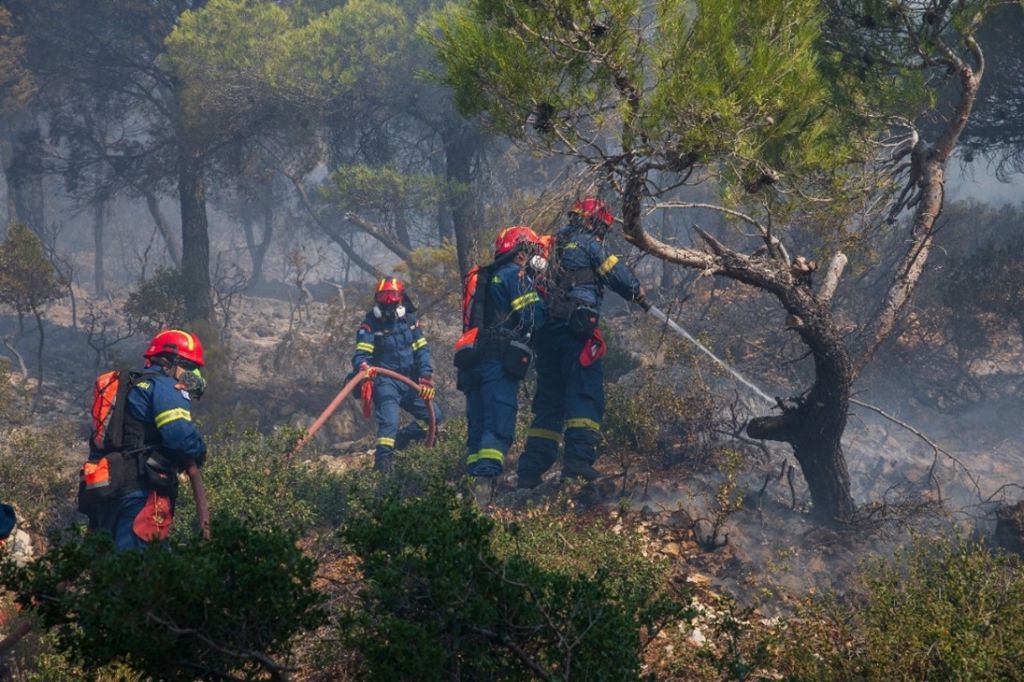
Description: In the Tatoi forest, firefighters carried out a combined operation of direct attack with a water line and support from aerial resources. The objective was to secure the perimeter in that area and prevent further spread. August 24, 2023.
Source: Jan Ohmen
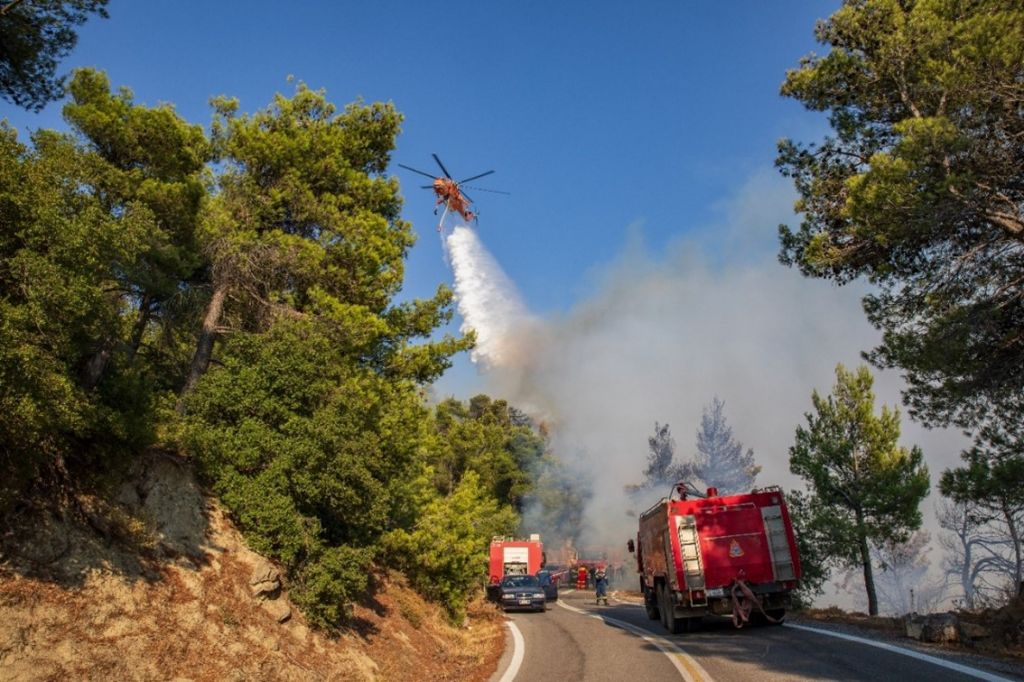
Description: Attempt to prevent the fire from crossing the road in Aspropyrgos. With only 3 vehicles and one aerial resource, the firefighters were unable to stop the fire in full alignment. In a matter of minutes, the fire had reached the top of the hill. August 24, 2023.
Source: Jan Ohmen
Preparing for a Safer Future
In conclusion, beyond the specifics of each nation, we are facing a global challenge that requires international cooperation and collective learning. It is crucial for firefighting teams to be able to accurately identify when, where, and how to intervene in a fire without endangering their lives or incurring ineffective efforts. Furthermore, society as a whole must participate in the planning of manageable and governable future scenarios.




